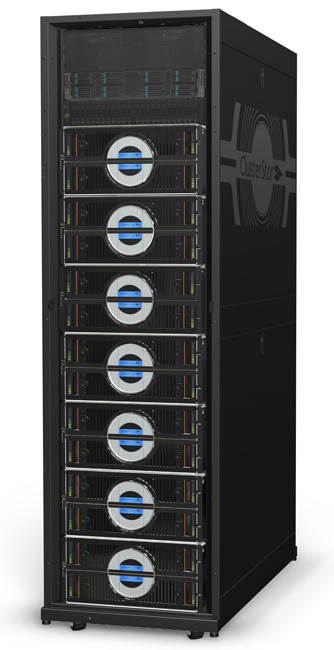![]() Today Seagate Technologies announced that it would be incorporating Intel Enterprise Edition for Lustre (IEEL) into its ClusterStor storage architecture for high-performance computing (HPC). Seagate states that this incorporation will strengthen its HPC data storage while providing customers with additional choices of Lustre parallel file systems. It will also create a common software platform between the two vendors, which should help drive advancements in the HPC and big data market.
Today Seagate Technologies announced that it would be incorporating Intel Enterprise Edition for Lustre (IEEL) into its ClusterStor storage architecture for high-performance computing (HPC). Seagate states that this incorporation will strengthen its HPC data storage while providing customers with additional choices of Lustre parallel file systems. It will also create a common software platform between the two vendors, which should help drive advancements in the HPC and big data market.
 Today Seagate Technologies announced that it would be incorporating Intel Enterprise Edition for Lustre (IEEL) into its ClusterStor storage architecture for high-performance computing (HPC). Seagate states that this incorporation will strengthen its HPC data storage while providing customers with additional choices of Lustre parallel file systems. It will also create a common software platform between the two vendors, which should help drive advancements in the HPC and big data market.
Today Seagate Technologies announced that it would be incorporating Intel Enterprise Edition for Lustre (IEEL) into its ClusterStor storage architecture for high-performance computing (HPC). Seagate states that this incorporation will strengthen its HPC data storage while providing customers with additional choices of Lustre parallel file systems. It will also create a common software platform between the two vendors, which should help drive advancements in the HPC and big data market.
Lustre software is a Linux-based, open-source parallel file system at the heart of most HPC storage systems, and powers 40% of the world’s fastest supercomputers. As we announced back in November, Seagate released its Lustre HPC solution the ClusterStor L300. Until this collaboration both Seagate and Intel managed their own Lustre distributions based on the Open SFS community release, with both companies providing the benefit of additional levels of testing and complementary software capabilities. Now Seagate will use IEEL as its baseline Lustre distribution. This brings the capabilities of both distributions together, which in turn will benefit the Lustre community as a whole, further advancing their roadmap.
IEEL will be incorporated into Seagate's ClusterStor L300. The L300 is quoted to boast upwards of 112GB/s in throughput per rack when integrated with Seagate’s ClusterStor HPC drives, which is a performance improvement of 77% over previous ClusterStor systems. This impressive performance will help customers reduce data center space, power and cooling costs as well as simplifying management and equipment requirements. The L300 also is designed to optimize random and sequential I/O workloads across the entire storage cluster, which will improve workflow productivity.
Seagate ClusterStor Parallel Storage System
Sign up for the StorageReview newsletter

